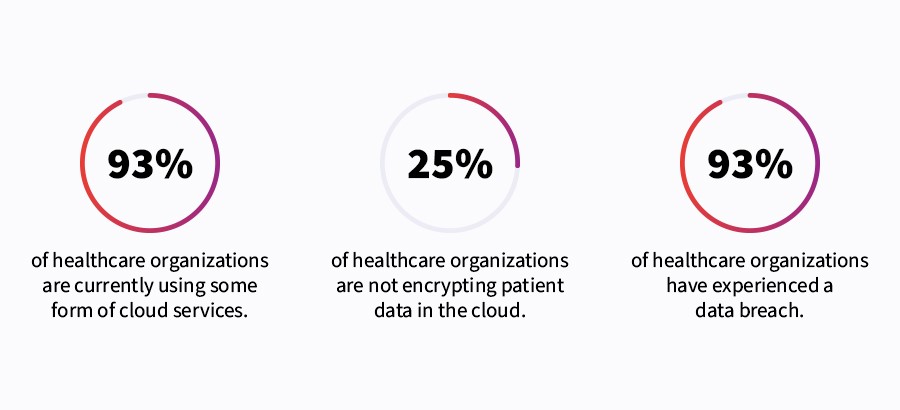- Advertising
- Bare Metal
- Bare Metal Cloud
- Benchmarks
- Big Data Benchmarks
- Big Data Experts Interviews
- Big Data Technologies
- Big Data Use Cases
- Big Data Week
- Cloud
- Data Lake as a Service
- Databases
- Dedicated Servers
- Disaster Recovery
- Features
- Fun
- GoTech World
- Hadoop
- Healthcare
- Industry Standards
- Insurance
- Linux
- News
- NoSQL
- Online Retail
- People of Bigstep
- Performance for Big Data Apps
- Press
- Press Corner
- Security
- Tech Trends
- Tutorial
- What is Big Data
Bare Metal Servers in Healthcare Fraud Prevention
As healthcare was one of the most affected industries last year in terms of data breaches, more hospitals, medical institutions, research, medical, and scientific labs should start using big data analytics to reduce fraud and enhance security. The National Healthcare Anti-Fraud Association estimates the cost of healthcare fraud to be 80 billion dollars annually only in the U.S. Moreover, waste in healthcare costs up to 200 billion dollars. Let's see how fraud and wasteful treatments affect the healthcare industry, and how you can leverage big data to identify and prevent scams, fraud, unnecessary treatments, and input errors.

Why Big Data to Reduce Fraud in Healthcare?
The total number of data records compromised in 2020 exceeded 37 billion, a 141% increase compared to 2019 and by far the most records exposed in a single year. The most affected industry this year was healthcare, with 12.3% of reported breaches.
Personal data is very valuable and profitable. Data is the new gold, as they say. In healthcare, especially, data is complex, and it requires special tools and knowledge to be appropriately analyzed, such as data analysis, machine learning algorithms, tech ability to address false positives, and so on. Many variables affect patients, providers, and healthcare insurance businesses.
That is also why there are so many breaches nowadays in the healthcare industry, especially since the onset of the pandemic. With data breaches on the rise, the need for big data in healthcare refers not only to real-time and predictive analytics but also to security enhancement and fraud prevention.

* source 1, source 2, source 3.
However, besides the actors that commit fraud deliberately, there are also cases of wasteful treatments or unintentional input errors made by staff. These errors are not as problematic as deliberate fraud and abuse of insurance plans, but they still happen regularly.
In both cases - deliberate fraud or simple errors - machine learning-powered by big data can identify abnormal patterns based on historical data and help minimize risks and prevent fraud in the future. But how to use big data to reduce fraud and enhance security in healthcare? What are the best ways to prevent data breaches in healthcare?
Enhancing Security in Healthcare
You can use analytics to help prevent security threats by:
- Identifying changes in network traffic
- Identifying behavior that suggests cyberattacks
Big data has inherent safety issues, but thanks to technological advances in security such as encryption technology, firewalls, and anti-virus software, big data's benefits now outweigh the security risks. Securing everything from your server infrastructure to your governance at company level and the tools used is of utmost importance.
 * source.
* source.
How to Reduce Fraud in Healthcare Insurance

The National Health Care Anti-Fraud Association (NHCAA) estimates that the financial losses due to healthcare fraud are in the tens of billions of dollars each year. Not only in the States, but worldwide fraud is known as a multi-billion dollar problem. Fraudulent claims are not new, but the complexity and diversity of fraud increase exponentially year by year, and healthcare insurance companies find themselves unable to cope with them. This is where big data and analytics come in.
Identifying fraud at an early stage is essential in healthcare insurance. Big data analytics can help find different ways to do just that. However, analyzing the high numbers and large volume of data from healthcare providers requires a lot of computing power and fast processing, sometimes even in real-time. With its complex programs of AI (decision trees, outlier detections, data visualization, and more), machine learning can help identify fraud and waste faster.
Due to the complexity of healthcare fraud, where a large volume of unstructured data needs to be analyzed, it was relatively difficult to use big data and machine learning to detect it until this decade. The amount of computing power, the server infrastructure, the storage capabilities, and the big data tools needed to identify healthcare fraud correctly were simply not available. Nowadays, from storage to processing, there are multiple technical assets to help you start the fight against healthcare fraud. Not only that, but it is becoming much cheaper to do that as well.
Hadoop Technology in Fraud Detection and Prevention
The increasing use of Hadoop technology in healthcare will provide better-personalized patient medications and treatments. It will put an end to the concept of one-size-fits-all treatment plans and medicines in the healthcare industry.
By using Hadoop, insurance companies are developing predictive models to identify frauds using real-time and historical data of medical claims, wages, voice recordings, demographics, and call center data. Since Hadoop allows you to store large unstructured data sets in NoSQL databases and then use MapReduce to analyze the data, it is now easy to investigate and detect patterns for fraudulent activities.
Bare Metal Servers in Healthcare Fraud Prevention
Most experts agree that big data workloads require the fast processing power offered by bare metal servers. However, in healthcare you should be focusing not only on the processing power and technologies used, but also on the security of data.
As mentioned before, many healthcare institutions are using cloud services. However, there is an inherent security risk to put all your data in a public cloud, which is, after all, a third-party service. Running big data in the cloud can bring about additional costs and a layer of complexity that will be prone to security issues and fraudulent activity. Your team also has to be very well prepared, both technically and in regards to teamwork, to handle vulnerabilities.
Furthermore, bare metal servers, which are dedicated machines at their core, are single-tenant so they provide you by default with extensive security. The benefit of using single-tenant servers as opposed to multi-tenancy is that it helps avoid spectre and meltdown type of sidechannel attacks. By using private, isolated data centers at the hardware level, you can be certain your data is as secure as possible.
By choosing a provider that also offers the scalability found in cloud, you can also easily scale your big data environments horizontally, when needed. Bare metal servers can provide your business with the flexibility found in cloud while not compromising on the security typically found on on-premises machines.
Key takeaway: Big data is better on bare metal servers.
Big data architectures can provide insight into large volumes of healthcare data. To be able to do that, however, you need specific infrastructure requirements:
- CPU power – big data solutions need significant computing resources in order to process results quickly
- RAM – most big data applications are memory-hungry
- Storage – large data volumes require robust storage space
- Bandwidth – low latency is critical in big data clusters, using Layer 2 networks can provide major benefits
If you need further details or help in choosing the best server infrastructure for your healthcare data workloads, we can help. Contact us anytime.
Readers also enjoyed:

"I Thought You Would Secure That S3 Bucket"


Leave a Reply
Your email address will not be published.